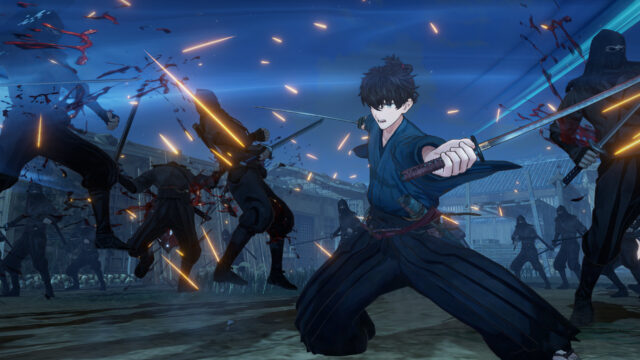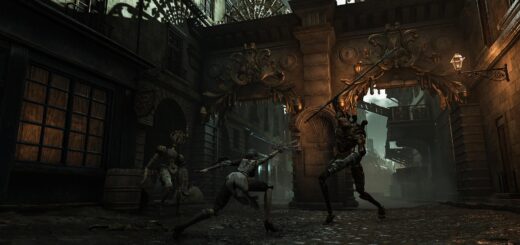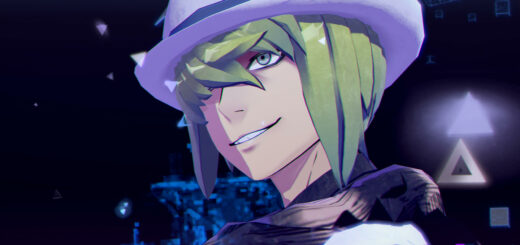Fate/Samurai Remnant Review
Ghosts of Edo Past
Koei Tecmo’s Omega Force studio has impressively built upon the success of its Musou series, taking its addictive action combat and using it as a base to work with a wide variety of other franchises for an ever-expanding array of spin-offs. Its latest title links it up with another series with an interesting history in Type-Moon’s Fate franchise. Fate/Samurai Remnant offers an engrossing tale in Fate’s splintered causality, taking it to an interesting time period, though the gameplay doesn’t do all that much to distinguish itself. There’s plenty to enjoy, even if it never rises to the full highs other titles have reached.
Fate/Samurai Remnant very much leans on Japanese history, and is set in a version of Japan in the 4th year of the Keian Era (1651 CE). Players control swordsman Miyamoto Iori, the adopted son of Miyamoto Musashi, who lives in the capital Edo. Iori finds himself thrown into the Waxing Moon Ritual, a contest that sees seven pairs of Masters and summoned legendary figures called Servants try to eliminate each other, with the victor having their wish granted. The ritual is readily acknowledged as a copy of the main series’ regular Holy Grail Wars — though the mechanics behind everything are rendered largely unimportant — with plenty of references to other entries. Fate/Samurai Remnant’s story itself is wholly self-contained and needs no prior knowledge to enjoy, with all the important aspects readily explained in-game. Pointing to the series’ multiversal nature and history, the game takes some liberties with its characters, but uses its historical elements well to create a distinct setting.
Iori finds himself partnered with the Saber-class servant, with each of the seven Servant classes represented in the contest. Servants are primarily referred to by their class, as knowing their true name is vital information that can reveal their abilities and weaknesses, and they often go so far as to hide it from their Masters. The historical elements do a good job bringing character to the game’s earlier moments, and providing some useful flavour to many of the characters’ motivations. Twists and high pressure moments come about quite suddenly and many of Iori’s actions are quite reactive, but Fate/Samurai Remnant is great at utilising its characters and their largely tragic stories to drive home the game’s drama. The interactions between Iori and Saber are a particular delight, building from Saber’s giddy excitement at how things are different from their world to a full camaraderie as the pair fully learn each other’s pasts, motivations, desires, and flaws.
Fate/Samurai Remnant gives players two main endings in its first playthrough, which separate shortly before its final chapter and provide some closure on the story. However, perhaps its truest ending is locked behind a New Game Plus run. It feels specifically designed so that players are expected to only truly connect all of the dots of Iori’s journey with the second run-through, with Fate/Samurai Remnant actually providing additional events within the New Game Plus, but the overall gameplay doesn’t feel entirely suited to this approach. A New Game Plus run is at least made a lot quicker thanks to an option to readily skip through previously read text, though this again asks the question of whether forcing players who wish to see the full story is really necessary.
Anyone with passing familiarity with Musou or its other crossovers will understand the combo-driven basics of combat as players take on a variety of groups of enemies, most of whom are fodder with leader characters offering much sterner resistance. Players by and large strike up a series of regular attacks, finishing it off with a strong attack, the nature of which depends on how long the combo was. However, Fate/Samurai Remnant places much more importance on taking on those singular powerful enemies than other Omega Force titles. Players can’t simply go all out, these enemies will readily guard and can only be interrupted in their attacks by special abilities so players will need to take avoiding action, with counterattacks available for succinctly timed dodges. The most powerful enemies will also have a spiritual shield that must be broken down before any significant damage can be done.

Combat still features lots of no-name fodder, but has a greater focus on more challenging opponents.
Players control Iori for the vast majority of the game, with Saber fighting alongside him independently. In addition to different sword styles — which offer a decent mixture of benefits, styles, and bonuses to encourage players to keep swapping between them on the fly — Iori has access to magic spells that can used by picking up gems dropped by enemies, as well as plenty of options to team up with Saber in combat. Saber can use special attacks provided the relevant gauge is sufficiently charged from actions in and outside of combat, as well as occasionally prompting team-up attacks activated by pressing a button when in a certain area. Another gauge also allows players to take direct control of Saber in a powered up state and inflict significant damage for a short while. Iori is also joined by a new concept for the series, Rogue Servants. These are unaffiliated Servants who can lend their aid to those they wish and who get their own sidestories. Players can be accompanied by one of these Rogue Servants, offering a second set of special attacks alongside those of Saber.
Players also get to control many of the other members of the main cast at points in the game. The controls are virtually the same for all of them, but there are enough differences in their combat styles to make it an appreciable variation to the otherwise repetitive flow of everything. On top of traditional experience-based level ups, Iori and Saber have their own distinct skill trees that offer various unlockable bonuses, with all of the recruitable Rogue Servants also having their own smaller upgrade trees. Players can further upgrade Iori by changing his sword mountings with different parts dropped by enemies or bought from stores, as well as getting more upgrades from his workshop. None of the systems stand out in any way, but there’s enough to them to give players something to interact with and get a decent sense of progression every now and then.
Extended combat missions also involve taking on a strategic mini-game, where Iori will advance through leylines to spirit fonts around Edo, trying to reach specific locations while fighting off enemies using the leylines themselves. These missions offer a small diversion from the regular wandering back and forth between battles and events, and there’s some interesting stategic elements, but it never fully commits to making it more than that. Ultimately, that becomes a running theme for the game; it never quite feels like it’s ready to go all-in on epic clashes between Servants, and the combat often just lacks the necessary sense of feedback to make players feel properly involved. Unleashing a special ability gets some impressive lead in and animations, but there’s rarely any momentum to the combat outside of seeing whether relevant bars have been filled or depleted, and it just doesn’t quite impart a proper sense of either landing or being on the receiving end of a direct hit. Things are further tempered by the repetitiveness of encounters, particularly as the game approaches its climax, throwing waves of the same enemies at players without adding anything to them.
Players move through the various districts of Edo heading to next story point or battle. Each district has its own layout, potentially with out-of-the-way alleys or multiple paths through them. The overall design of each district works very well at imparting the setting, and showcasing differences between the constituent parts of Edo and its culture, including the culinary delights at the numerous food stalls. However, there’s not that much to do within them, and the most interesting part of exploring is simply finding all of the cats and dogs to pet, which has the small benefit of a small amount of extra healing. Otherwise there’s not really any benefit of wandering outside of the critical path unless one wants to fight more. There are small bonuses to be gained from doing so, with each area having its own small checklist of accomplishments, plus a wider set of similar “jobs”, but the benefits aren’t particularly worth the effort.
Fate/Samurai Remnant looks the part well enough; Edo itself gets plenty of love in its locations, which are joined by appropriate and distinct designs for the cast. While combat itself often looks floaty, there is at least appropriate flash and pomp behind all of the special abilities. The only real downside is the repetition within everything; once players have been to each location, there’s not really much else to see from any revisits, and players will be facing the same generic enemies over and over again. On the sound side, the game is fully voiced in Japanese with good performances across the cast, while the music provides an enjoyable backing to everything. There’s a good mixture of catchy tunes, slower emotional tracks, and engaging battle themes to make for a strong audio experience.
Fate/Samurai Remnant makes its mark with a strong story and setting, though the gameplay isn’t quite enough to make the most of it. It’s still enjoyable to work through, but the repetitiveness of everything begins to grate by the time a first playthrough is done, running counter to the game’s clear intention of getting players to revisit it for the additional story elements and endings. Fans of the series will certainly be able to appreciate its take on the formula and how it connects to the wider series, and despite the game’s weaknesses, its story should be more than strong enough to get new fans into the franchise.
Disclosure: This review is based on a free copy of the game provided by the publisher.


Well realised setting and story
Strong audio
Decent amount of digressions
Combat starts to grate
Not much explorative benefit
Extra ending requirements feels unnecessarily forced








Recent Comments